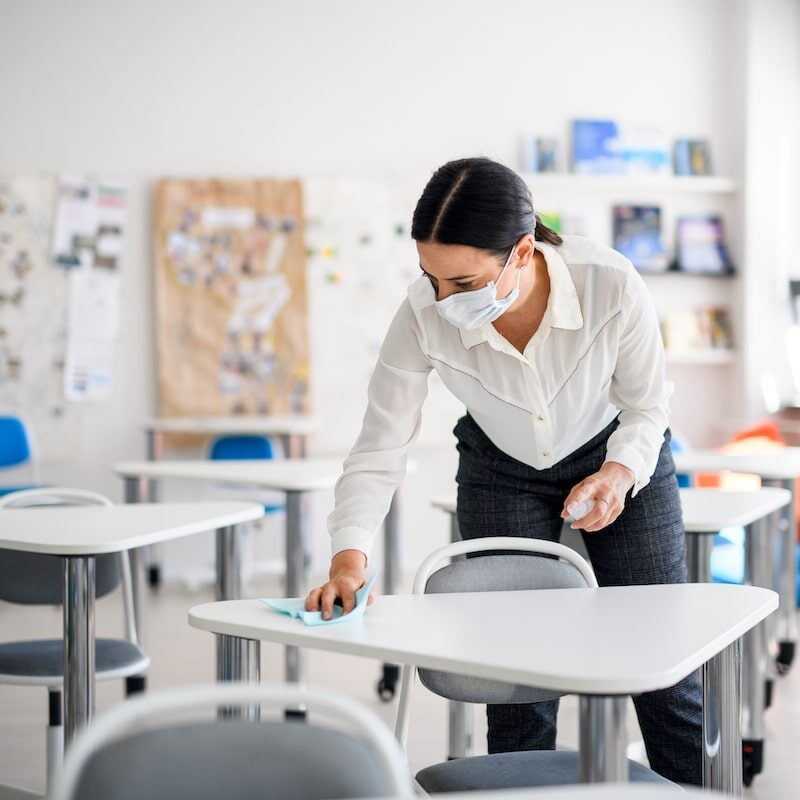
Kids are wild, dirty, and unpredictable. They take a lot of care. Naturally, sanitation staff in schools have quite the job on their hands! Because kids spend so much time there, schools are effectively miniature communities with all the facilities such a community requires.
School sanitation staff need a huge array of supplies to deal with both routine and unexpected jobs, from yearly maintenance of complex systems to a suddenly sick five year-old. As stewards of the next generation, they need the right supplies.
School districts know they need to invest in high quality cleaning supplies for the health of their students.
Regulations and Health Standards
Like most education standards, sanitation guidelines for schools are handled primarily at the state level. Individual districts may have additional cleaning standards. Special needs schools, such as those for physically disabled or severely mentally disabled students, often have additional guidelines.
School Cleaning: What’s Required?
So what has to be kept clean at a school?
- Classrooms and libraries. Desks, shelves, bookcases, and computer mice and keyboards are germ magnets for busy students. Floors – especially the rugged linoleum in many schools – also require regular cleaning.
- Hallways. These main arteries of a school building are usually mopped daily and then buffed and waxed annually.
- The cafeteria. Cafeterias have the same infrastructure as any restaurant: cutting surfaces, pots and pans, tables, chairs, appliances, and a freezer.
- Restrooms and locker rooms. Locker rooms often have showers and other specialized equipment with its own maintenance needs.
- Students. Students need a constant supply of soap and water, and COVID-19 has also made hand sanitizer especially important. For younger kids, supplies for…accidents are also paramount.
